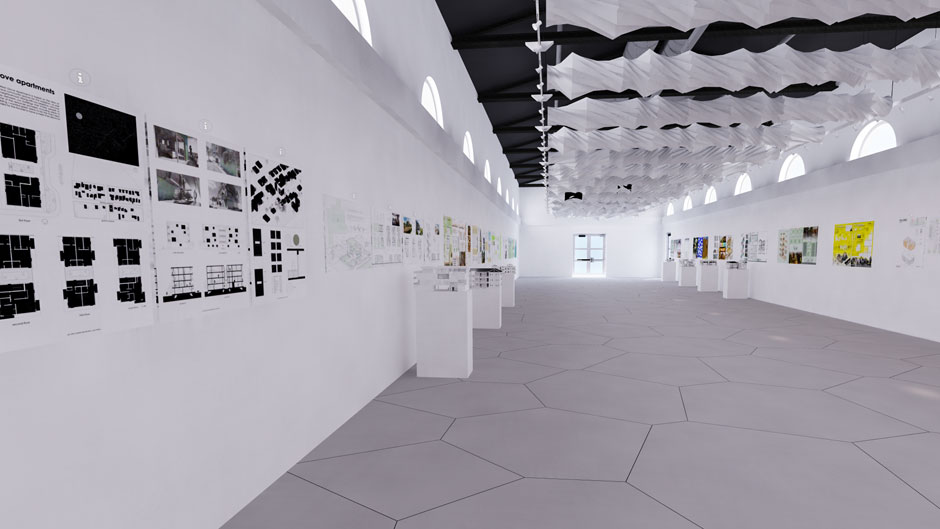Imagine that you are walking inside the Roman Colosseum in 72 A.D. and can explore every brick of the structure that took nine years to build but still partly stands in the center of Rome.
You are not in Italy. Instead, you are a student sitting in a classroom at the University of Miami School of Architecture wearing Oculus goggles. That is the kind of experience that mixed reality (virtual reality and augmented reality) or the metaverse can offer and the kind of work that the RAD (Responsive Architecture + Design) Lab at the School of Architecture has been using in experiments.
“For architects, this technology is a game changer,” said Rodolphe “Rudy” el-Khoury, dean of the school and director of the RAD Lab.
For architecture students, mixed reality or XR allows them the flexibility to immerse themselves inside buildings not only to explore how they were constructed but also design their own environments and contribute to that virtual world.
The RAD Lab’s latest venture into this technology was created a few weeks ago. Students from several studio classes coordinated by professor Eric Firley had imagined how the West Grove neighborhood in Coconut Grove could be redesigned from single-family units to multifamily units.
An exhibit of 40 of the student’s projects were displayed at the Woman’s Club of Coconut Grove. However, that exhibit ended in late September after a short run.
In order to extend the exhibit and offer it to a wider audience, the RAD Lab digitally recreated the exhibit and placed it in a virtual Korach Gallery.
“We reproduced the gallery in the metaverse down to every detail,” said el-Khoury. “On your computer screen you can navigate the space and look around and zoom in on different panels on the wall or call up additional information.” An enhanced version of the virtual gallery will soon be available for VR headsets for a more immersive experience.
The metaverse is already impacting many disciplines but it is a transformative medium for architects, said el-Khoury. Next semester, he will co-teach with Inderit Alushani, a research associate at the RAD Lab and a lecturer at School of Architecture, the “Designing in the Metaverse” class that will enable the future architects to collaborate in new ways and to leverage the technology for more advanced designs. In the first three weeks of the course, the students will meet as avatars in a virtual studio to co-create a piece of the metaverse.
According to el-Khoury, there are discussions being held with potential donors who would invest in a project involving RAD Lab staff and students in building a digital twin of Miami Beach and all its historical buildings.
“We can reproduce them very accurately, and when you visit them in the metaverse they will seem very real,” he said. “The recreation would preserve them for posterity, against the adverse effect of climate change—at least as a virtual experience. It also provides the city and industry partners with a digital model for multiple uses, from staging planning scenarios to running simulations that visualize the impacts of sea level rise and extreme weather events.”
For architects, the new technology will become crucial since the profession is becoming more collaborative and global, noted el-Khoury.
“Let’s say that there are architect firms that have branches here and in China,” he explained. “The architects can work here and then when they finish their work it can be picked up by those in China who continue to work seamlessly in the same virtual space.”
Those same architects can meet virtually inside the structure they are building and exchange information and redesign areas that they want to change. “So, it enables immersive and seamless collaboration despite the distance in geography,” said el-Khoury.
The use of XR technology by developers as a virtual complement to the traditional showroom is rapidly gaining traction. RAD Lab is exploring this practice, potentially in collaborating with Yupix, a Wynwood-based company that is leading in this space. RAD Lab and Yupix are currently discussing opportunities for sponsored research to enhance the experience of architecture in the metaverse.
The potential of XR beyond architectural applications is immense and RAD Lab researchers are eager to take on interdisciplinary projects or assist teams in other academic units with technological support, such as in recent collaboration with the Frost School of Music that brought virtual imagery to the concert hall.
Last semester, a group of students participated in a course, “Religion and Sacred Spaces in the Era of Virtual Reality and Artificial Intelligence,” which was taught in virtual reality. It was a multidisciplinary collaboration, which included professors Kim Grinfeder, director of the Interactive Media Program at the School of Communication, William Green of the Department of Religious Studies, and Denis Hector of the School of Architecture.
The Creative Studio at the Otto G. Richter Library also offers opportunities for classes to immerse themselves in different virtual worlds.
“The pedagogical potential of XR is limitless,” el-Khoury pointed out.

